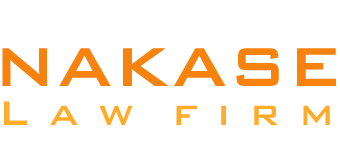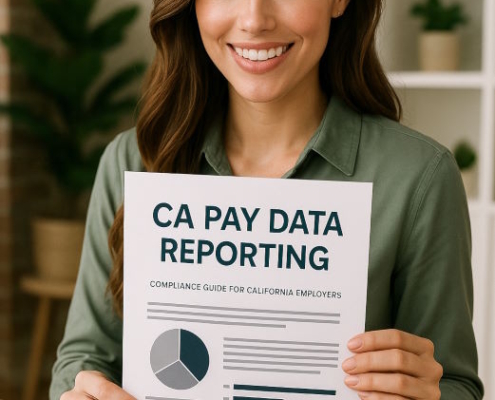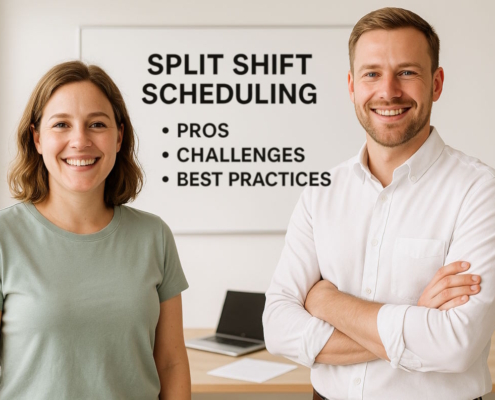What is people analytics?
The core of human resources is people analytics. Nowadays, a lot of an organization’s decisions regarding its personnel are analytical and data-driven. Therefore, possessing and making use of effective people analytics is essential to winning the talent war.
People analytics has developed over time, moving from reporting on HR systems, headcount, statistics on vacation and sick leave, to more sophisticated features like workforce planning and talent management.
You can find all the information you need regarding people analytics in this guide.
To improve key company outcomes, people analytics gathers and applies talent, organizational, and people data. It gives HR departments the data-driven insights they need to decide on various personnel procedures and then put those decisions into practice to improve the performance of an organization.
Use of people analytics is essential to evidence-based HR practice.
People analytics are used by organizations in important HR functional areas like performance management, equality and belonging, diversity, inclusion, and recruitment and selection as well as compensation and retention.
What distinguishes people analytics from HR analytics?
People analytics and HR analytics are concepts that are often used synonymously. But there is a distinction. While people analytics encompasses data from marketing, finance, customers, and other sources, HR analytics suggests that the data is limited to Human Resources.
Moreover, service providers sometimes simply concentrate on HR solutions rather than comprehensive people analytics solutions, and HR analytics is frequently misused.
The four categories of people analytics
People analytics come in four types, and each one provides unique information. Each can be useful separately, but when combined, they provide a more complete picture. Think about the data you have access to and your needs when choosing which approach to use.
- Descriptive analytics
A fundamental kind of people analytics, descriptive analysis (sometimes called decision analytics) examines trends in past data sets to shed light on what occurred. Descriptive analysis, however, does not forecast the future using these facts. Organizations using people analytics most frequently use descriptive analytics. Indeed, this kind of analytics is used by 83% of companies.
- Diagnostic analytics
By providing a deeper explanation for the conclusions found in the patterns, relationships, and abnormalities of the data, diagnostic analytics goes beyond descriptive analytics.
- Predictive analytics
Predictive analytics organizes past and current information to gain insights, then employs an estimating model to forecast what may occur in the future. Just 20% of businesses always or frequently use this kind of analytics.
- Prescriptive analytics
The last phase, known as prescriptive analytics, translates the results of predictive analytics into choices and activities that will lead to success. 42% of firms use prescriptive analytics at least moderately, compared to 17% who use it heavily.
The Background of People Analytics
Human capital analytics was among the earliest applications of analytics in HR (HCA). This field developed out of economics and accounting to assist businesses in valuing human resources.
According to a number of HR professionals, HR should use operational metrics to monitor its efficacy and the value it adds to the company, just like sales, marketing, IT, and other business functions. This marked the beginning of the change in HR’s perception from a support role to a business function.
The primary drawback of HCA is that it is revenue-based and prioritizes the economic worth of employees over other considerations. This was replaced by more recent, all-encompassing methods like people analytics, which focuses on people and uses people to solve business issues.
In order to produce actionable insights, it is also multidisciplinary and incorporates a range of data sources (financial, marketing, customer, etc.). Even if HCA can only provide you with your company’s average economic worth per person, people analytics can help you understand employee performance and find ways to maximize it. This can improve your bottom line.
People analytics has also shifted HR from prescriptive to predictive analytics, allowing companies to base hiring, training, and other personnel decisions on data.
What are some examples of how people analytics is used?
Let’s look at a few case studies of multinational corporations using people analytics to effectively inform their business decisions.
Google
One of the first companies to apply people analytics in decision-making was Google. For instance, to determine what constitutes an excellent manager and a productive team, their People Innovation Lab (PiLab) analyzes a range of data. They then use the information they’ve gathered to inform decisions on recruitment, instruction, and promotion as well as team structure.
NASA
Finding talent that fits is a difficult undertaking at an organization like NASA. There, specific data science abilities are required, and knowledge is continuously changing as technology improves.
NASA uses Neo4j technology to establish a talent mapping database and generates knowledge graphs that show the connections between individuals, projects, and abilities. NASA may use these graphs to pinpoint the precise technologies, skills, knowledge, and talents needed for a job and then apply those to an employee’s projects and training.
For instance, knowledge must be acquired through employee training. This calls for the development of a skill, and in order to acquire that talent, the employee must perform certain exercises or tasks that allow them to become skilled in the talent or talents in question. This gives workers the opportunity to advance in their careers or change vocations, helps NASA better align its workforce throughout the organization, and enables NASA to determine the “DNA” of a position.
Microsoft
Microsoft introduced “Manager Hub,” a platform for generating insights and a central location for managers to access information.
The platform suggests specific actions for managers to take together with the justification for those actions. For instance, timely suggestions based on actual data, like whether supervisors hold “connect sessions” and have one-on-one conversations with staff members. Push alerts that are connected to the work calendar are used to manage the tool.
Uber
Uber was able to provide people managers with access to people analytics, which increased employee engagement and produced better business results. The business took three steps to do this.
Uber first made sure that the appropriate individuals had access to the required dashboards and data. They gave managers access to their people analytics tools so they could use them instead of simply HR.
Second, the HR team asked executives what they needed to know in order to create their people analytics solutions in a user-oriented manner.
Finally, Uber improved its staff dashboards to deliver clear answers to a specific inquiry. They made it easy for anyone to understand and make a decision by eliminating all superfluous dashboards and graphics. Previously, managers at Uber had to go through HR and take two weeks to make a talent selection. But if they had access to real-time data, they could act more quickly and more effectively.
The advantages of people analytics
People analytics offers businesses several advantages in addition to a competitive edge.
- Using evidence-based HR and data-driven decision-making
HR may make evidence-based judgments instead of depending just on a “feeling” by evaluating internal data, research, and surveys in addition to expert opinion, experience, values, and concerns. By doing this, prejudices, band-aid solutions, and inconsistencies are eliminated.
Organizations may reduce turnover rates by up to 50% and boost recruiting effectiveness by 80% with data.
- Using HR interventions to shape company strategy
HR may use people analytics to put information into practice and match facts to corporate strategy and company goals. HR may take a seat at the leadership table and teach executives new tactics and procedures that will boost revenue and advance the company by showcasing how suggested people methods can support the business in achieving its goals.
- Increased productivity and efficiency within the company
Dashboards and trends that show specific problems, such as cooperation, workload, inclusion and diversity, and risk in the workplace assessments, all help to improve performance. People analytics has, in certain cases, almost doubled worker production and performance.
- Finding cost-saving opportunities
Because people analytics show the potential worth of every dollar spent in many circumstances, they can assist the business in more efficiently allocating its money. Let’s say, for instance, that data indicates a specific L&D program raises revenue and employee performance. Then, it would be prudent to increase funding for that particular program while decreasing expenditures on others that don’t yield the same returns.
Similarly, you may continue to receive the best prospects from one recruitment channel who end up being high-performing workers. You have the option to allocate more funds to this channel and less funds to other sources that are bringing in less qualified applicants.
Data can also be used to improve workforce planning and lower turnover.
- Bridging skills gaps
Unresolved skills gaps can have a negative impact on attrition, morale, and employee engagement. Organizations can close the talent gap by using people analytics to assess employees’ present talents as well as the skills that will be required in the future based on business need.
By determining which employees are best suited for upskilling, you may cut down on recruitment expenses and make the most of your current personnel. After that, you can hire fresh talent to cover any holes left by your current staff.
- Lowering attrition among employees
Metrics and data from people analytics can also be very helpful in understanding the following:
- Which workers are quitting and why
- Any department turnover that is above average
- Early attrition rates
- Your retention rate
- The employees who are most likely to leave
Using this information, HR may develop focused plans that tackle the main reasons why workers depart the company in an effort to lower turnover rates. An illustration of this would be workers quitting after three years due to a lack of prospects for professional advancement. One possible approach would be to design career-path oriented employee development plans for each of your employees.
- Improving hiring and attracting talent
Making poor hiring decisions can have a negative impact on the company’s operations and culture. Monitoring important hiring metrics, such as cost per hire, hire quality, and candidate experience, can provide you with important information about the advantages and disadvantages of your hiring procedure. By doing this, businesses may better understand who to hire, streamline the hiring process, and save money on recruitment and turnover.
HR measurements
People analytics is based on HR measurements, which supply the required data inputs. People analytics aids in the conversion of these data into useful insights, pinpointing areas in need of development, projecting requirements for the future, and formulating plans to maximize personnel management.
Let’s examine some of the most important HR metrics and their significance.
- Rate of employee turnover
The number of employees who leave a business over a given time period is known as the employee turnover rate. This information is typically provided on an annual, quarterly, or monthly schedule.
With a detailed study of your employee turnover data, you can quantify the number of workers that leave, the frequency at which they depart, the financial impact on the company, and the risk of current employees leaving.
It is possible to determine which departing employees are high or low performers by integrating the employee turnover rate with a performance metric. Ideally, you want high performers to stay with the company while low performers are let go.
When creating plans for recruiting and retention, employee turnover data is a valuable resource.
- Early turnover
The percentage of workers quitting within their first year of employment at a company is known as early turnover, or new hire turnover.
Businesses incur high costs due to this kind of turnover. Depending on the function and seniority, studies suggest that the cost of employee turnover ranges from 33% to 200% of the employee’s yearly income.
A high turnover rate among new hires is a sign that the corporate culture and the employee’s skill set are not well matched. As a result, early turnover is a crucial indicator of the effectiveness of your hiring strategy.
- Rate of absenteeism
The absenteeism rate is a statistic that indicates the percentage of unscheduled absences for a team, a person, or the entire company. Unexpected absences consist of:
- Sickness
- Absence due to stress
- Unexpected absences (a parent phoning in sick to tend to their sick child, for instance)
- A fake sick day
Since illness cannot always be prevented, a certain percentage of absenteeism is expected. A higher than normal absenteeism rate, however, may be a sign of unhappiness and workplace issues.
Examining the differences between managers and departments, for example, can highlight possible issues that need to be addressed in order to stop long-term absences in the future.
- Time to hire
The number of days that pass between an applicant’s application and their acceptance of a formal job offer is measured by the time to hire statistic.
This helps HR in gauging the effectiveness of their hiring procedure and the quality of their candidate experience. A lengthy hiring process generally detracts from the candidate experience and frequently results in you losing out to rivals for great employees.
- Cost of hiring
It can be difficult to determine how much it costs your company to hire a single employee; this is what the cost per hiring metric shows. All of your external and internal recruitment expenses must be added up and divided by the total number of hires you make over a predetermined time period.
This measure allows you to assess the effectiveness of your hiring procedure. This number can then be compared to other indicators (such revenue or hours worked per person) to help you determine whether or not your investment is yielding a healthy enough return.
- Earnings per worker
You can estimate how much money each employee makes at your company by looking at revenue per employee. This is useful for evaluating the quality of your staff and the general effectiveness of the business, as well as for comparing revenue from year to year and with competitors.
- eNPS
Employee loyalty and satisfaction are gauged using a scoring system called the employee net promoter score, or eNPS. On a scale of 0 to 10, employees are asked to confidentially rate how likely they are to recommend their company as a place to work. They are then asked to explain their score in a follow up question.
Your promoters—very happy workers who are inclined to suggest the company as a place to work—are important because they can improve your employer brand and attract more exceptional applicants.
On the other hand, your critics—those who are unlikely to advocate for the company and who might not be happy at work—can assist you in identifying issues that require attention and can also alert you to future departures from the company.
- Engagement rating
A statistic that indicates how engaged your staff members are at work is called an engagement rating. Engaged workers typically enjoy what they do, have a sense of pride in their organization, and work better under pressure or in difficult conditions. The success of a team manager can also be predicted by team involvement.
Dashboard for People Analytics
On a people analytics dashboard, HR metrics are conveniently seen and tracked in one location. This kind of monitoring is crucial because it aids HR in the management of important metrics, the early detection of trends, problems, and opportunities, and the prevention of dangers before they significantly impact the company.
Managers may improve their performance and stay informed about team and departmental changes with the use of insights from an HR dashboard. Managers will be able to take more steps to keep their workers and will also be aware of the possibility of lengthy wait times for replacement employees if they are notified, for instance, that the IT department has a high turnover rate and a lengthy hiring process.
Furthermore, HR may transparently monitor the most important issue areas with the use of a people analytics dashboard. For instance, monitoring management turnover rates promotes responsibility and is probably going to cause managers to put in more work and focus on staff retention. By monitoring these problems, HR can encourage advancements in sectors that are focused on people.
The best methods for a dashboard with people analytics
Regularly update your dashboard. Make sure that your people analytics dashboard is automatically updated so that users can get up-to-date, accurate data.
Give the necessary details. Include metrics and data only that are useful and relevant to the business’s overarching objectives. Complicated people analytics dashboard design and reporting on unrelated data might have a negative influence on engagement.
Correct errors. No matter how effective your personnel, procedures, or software are, human error will always result in some mistakes. Correcting errors in the source systems when they arise is the most crucial procedure.
How to begin using person analytics
Here are some ways HR professionals may develop their own knowledge and abilities to establish a solid basis for people analytics.
- Develop a mindset that is data-driven
Prior to the invention of modern technologies, judgment was often made on the basis of intuition. Moving away from this and developing the habit of evaluating and interpreting data to make business decisions that are supported by evidence is one of the fundamental competencies for people analytics. Nevertheless, data literacy is a fundamental HR ability that is lacking in nearly 59% of HR professionals.
It takes a culture of constant learning, openness to new technology, and an understanding of the ability of data to inform people strategy to develop a data-driven mindset and data literacy.
For instance, you may begin by looking at data that your company already has on hand and asking yourself what insights it can provide. Making a headcount report from a basic headcount analysis can be the easiest way to accomplish this.
- Develop your expertise in people analytics
Developing the following essential people analytics competencies improves your ability to make use of data insights:
- Business acumen: When dealing with data, it’s critical to adopt a business-based strategy and understand how data analysis will affect the company.
- Communication and consultation: Consult with business executives, control expectations of stakeholders, inform them of developments, and share analytics project outcomes to highlight the effectiveness of your work.
- HR experience is crucial since it applies to practically every aspect of people analytics, regardless of whether you work primarily on the business side of an analyst function or are more extensively involved with data.
- Data analysis: Since an HR analyst must report on HR data, they must extract information from HR systems, maintain its quality, examine it, and update the systems. It’s crucial to pay attention to details and have a desire to use data to solve problems for the company.
- Global and cultural awareness: Since most analysts deal with global data, it’s important to understand both the sources of data and how different cultures impact HR.
- Begin with Excel
As the industry leader in data analysis, Microsoft Excel can serve as a starting point for a career in people analytics. It is not a replacement for an HRIS and lacks the most sophisticated analytics features, but it is very simple to use and useful for dashboarding, data cleansing, rapid analysis, and storytelling.
Pivot tables are among the most helpful Excel features for HR, since they enable you to quickly obtain insights and summarize data.
- Make use of sample data sets
Having insufficient data can frequently act as a barrier to improving people analytics. Using sample data sets can be useful in learning how to use data and testing techniques.
To create a sample data collection, you could also employ an AI tool like ChatGPT. After that, you can paste it into Excel to begin your analysis.
- Develop a thorough grasp of the industry
You can use data to create policies, processes, and activities that support the organization’s short- and long-term goals, help it grow and increase its profitability, and foster leadership development. To do this, you must develop a solid grasp of business. You must also understand the organization’s goals, purpose, and vision.
Strategy for people analytics
You can gain valuable insights about your organization’s talent by developing a people analytics approach that works and is suited to your needs.
Listed below are some useful tips to get you started developing your plan.
- Identify the issues that need to be resolved
What problems does your company now have, and how would a data-driven strategy help with them? Which metrics would be most useful, specifically? Remember that you are not required to address every problem at once. Set priorities and begin with the most important tasks first.
For instance, you might wish to source data for skills gaps, better employee retention, or strategic work planning.
- Connect your people analytics to business objectives and outcomes
In order for a people analytics strategy to be successful, it must support the leadership team’s position because it aligns with the business plan and helps the organization achieve its long-term goals.
Consult the senior executives about any particular areas they would like to see improved. To get their support, describe how people analytics can offer the information required to help produce a superior result.
- Examine data sources and search for any gaps
To make confident, well-informed business decisions, you need access to high-quality data. Determine appropriate data types (that you can monitor) and reliable sources. What information do you now have, and what do you lack?
Think about how you will gather them on a regular basis and cover any gaps.
You can identify trends and gather data with a wide range of information, which will enable you to take appropriate action to address the issues you’ve already recognized.
- Assemble your tools
An efficient people analytics approach depends on having the appropriate technology and tools. Consider how you can make use of the several data sources that are now available (such your HRIS). Once you are aware of what you have, you can explore further options (such as an ERP platform, tools for data visualization, a platform specifically for people analytics, etc.).
Use free trials to try out options and choose which one best suits your needs as a business. Keep in mind that anything you add must be scalable and integrate with the tools you already have.
- Make decisions based on insights
It’s crucial to make use of the data you’ve worked so hard to gather and analyze! Write a clear, logical report that is easy to read and that assists in explaining findings to stakeholders in relation to organizational objectives.
What would happen to expenses and income, for instance, if staff turnover dropped by 10%? What steps could you take to further lower turnover?
- Develop a plan for communication
To get buy-in and create a feeling of urgency, it’s critical that you convey the findings of your data research to important individuals around the company in a straightforward yet impactful way.
Gaining the leadership’s attention requires you to translate difficult concepts into understandable stories and examples that highlight your findings. Your marketing department could offer help with this.
Think about developing user-friendly dashboards so that interested parties may explore, draw their own conclusions, and understand how the information affects the bottom line.
- Keep an eye on compliance and practice data ethics
People analytics involves gathering and analyzing massive amounts of data, and a lot of it is private and sensitive (e.g., pay data). Regulations pertaining to employee data gathering and privacy are subject to ongoing change, and your company must remain compliant.
Data ethics is a serious issue. According to research, 81% of analytics leaders think their data-driven projects have raised ethical and privacy issues. Additionally, it’s estimated that over 70% of workers have been given access to information they shouldn’t have. Thus, be careful to conduct your business with data ethics in mind.
HR Advice
Assure staff members that you are the person they can trust with their information and describe the precautions you are taking to keep it safe. To create and oversee compliance policies, think about assembling a group of representatives from various departments.
- Overcome obstacles in people analytics
Along the road, you will probably run into a lot of people analytics difficulties. For instance, preserving a positive employee experience despite the recent, major changes to work norms. Upskilling and reskilling current staff members will boost their value, productivity, and future readiness. Recognizing the special blend of abilities that results in an effective, high-performing team.
One of the biggest issues facing HR and people analytics specialists is learning how to accomplish all of these effectively. Nevertheless, they possess the ability to greatly enhance an organization’s worth. For this reason, you should try to figure out how to use people analytics to the fullest extent possible within your company.
- Get the people analytics department ready for expansion
When a people analytics strategy performs well, funding for growing the department inside the company may follow. In a similar vein, the people analytics department will expand along with your company. This may entail upskilling current staff members as well as bringing on new team members and tools.
Put another way, your people analytics strategy should change along with your organization’s demands, and you should be proactive in making adjustments to keep it working as best it can.
Setting up a people analytics team
Organizations that want to stay one step ahead of the competition must have access to reliable, useful insights about their employees. In light of this, it makes financial sense to establish a task force or team dedicated to people analytics.
How can HR directors set up a team to do people analytics?
- Make your people analytics objectives clear
Together with your people analytics team, what goals do you have in mind? Knowing your ultimate objective will allow you to plan your team’s composition, competencies, and tactics by working backward.
Perhaps you want to learn more about the employee lifecycle, use algorithms to forecast employee turnover more accurately, or identify underperforming teams so you can close the performance gaps.
- Determine the competencies your team needs
The goals you have for your people analytics team will determine the skills you need. What sort of data analysis, for instance, are you required to perform? Hiring someone with better, more sophisticated data analytics abilities and teaching them how to interpret data from an HR perspective can be necessary if you need to perform complex analysis.
For the people analyst position, typical required knowledge and abilities include:
- Excel
- HRIS
- Statistical modeling
- Data visualization
- SQL
- Encourage your team members to have a business mindset
Business-savvy people analytics specialists are able to link data and HR initiatives with how they affect operations and decision-making procedures in the workplace. This helps them in selecting and interpreting data more effectively for workable solutions.
Your people analytics team’s business knowledge can be strengthened by concentrating on four main areas:
- Knowledge of finance
- External environment
- Internal environment
- Political consciousness
- Equip your team with the proper tools.
With the correct tools, data recording and analysis may be streamlined and many spreadsheets can be avoided. Start by keeping your tech stack basic by using an ATS and HRIS to gather vital information about your staff and candidates. It won’t take long to see some results, at which point you can begin adding other tools and software as needed.
HR Advice
To keep your people analytics team current and help them advance their knowledge and abilities, provide them with opportunity to experiment with new technologies and join tech conferences and events.
- Select an operating model for people analytics
Determining the people analytics team’s place in the company, the ideal team structure, and their level of cooperation with HR become more difficult as companies spend more in these teams.
There are various strategies you can employ to determine where your people analytics team will be positioned inside the company:
- Decentralized: The HR division houses the people analytics team.
- Centralized: The entire organization is serviced by a single core analytics staff.
- Hybrid: Specialized teams are in place for certain business units, like HR, but a core team nevertheless supports the entire firm.
The best kind of people analytics operational model for your company should also be taken into account. For companies to reap the benefits of their people analytics investments and cultivate a data-driven culture, a well-aligned operating model is essential.
There are four commonly used people analytics operating structures:
- Centralized expertise hub: In this model, HR functions as the hub for people analytics, providing services to the rest of the company. Tasks are split between regular activities and designated projects, with business divisions being considered as clients.
- Hub and spoke model: In this arrangement, different business lines are connected to a central hub. Although every business unit has a dedicated people analytics team, they are all connected to the central hub that manages master data, shared platforms, and governance.
- Front-back model: People analytics is separated into a shared back office and a front office that interacts with clients. Infrastructure and data storage are handled by the back office, while services like operational reporting and data visualization are provided by the front office.
- Federated model: Within various company divisions, decentralized teams dedicated to people analytics function autonomously. Business units operate independently, while a small core team handles coordination.
Your company’s objectives, size, needs, resources, and analytics maturity level will all influence how you organize and deploy your people analytics team. HR and the people analytics team can work together more successfully if they have the appropriate operational model.
Developing your skill set with in-demand abilities is a terrific idea for your career advancement, since people analytics managers are one of the fastest-growing positions right now.
Taking a specialized people analytics certification course is one of the finest methods to accomplish this. Make sure the people analytics course you choose is appropriate for your level of expertise, hands-on, interactive, and includes a lot of examples.
Software for people analytics
For people analytics to be effective, technology is essential. Among the most beneficial tools for people analytics are:
- R
One of the most popular people analytics tools, R is appropriate for large amounts of data. It’s useful for statistical analysis and visualization and lets you examine and clean millions of rows of data.
- Python
Although Python is a less feature-rich analytical program than R, it is more approachable and can be used in place of R. If you value speed, Python might be your best option. R, however, is better appropriate if you plan to conduct statistical analysis over a number of years.
- Excel
Even if Excel is the most fundamental people analytics tool, as we’ve already discussed, it’s still useful for data analysis. It’s an easy-to-use application with many helpful tools and formulas.
Opening and editing comma-separated value (CSV) files in Excel is a simple process. Converting data into tables and graphics is also a simple process.
- BI Power
Power BI from Microsoft makes data aggregation, analysis, and visualization easier. With Power BI, you can link several source systems and combine them into a sizable database that is ideal for reporting and analysis.
- Tableau
Tableau is a little more expensive than Power BI, but it is comparable in that it lets you collect and view several data sources. Visualization is where it truly excels.
In addition to generic analytics tools, you can analyze and visualize people data with the aid of specific platforms for people analytics, like:
- Visier
One HR BI product, Visier, integrates multiple HR systems. It’s a platform for actionable people analytics insights that shows trends in workforce data and assists you in finding the answers to HR-related issues like “What drives performance?” and “What drives workforce productivity?”
Also, it makes predictions about impending promotions, individuals who are likely to leave the company, and other internal moves using algorithms.
- ChartHop
With the help of ChartHop, you can consolidate all of your personnel data into a single, up-to-date image that is accessible to all parties and can be used to inform better decisions. You are able to see where you are right now, picture possible futures, and take action based on insights.
- Orgnostic
Another specialized people analytics platform that compiles all of your HR data from many sources and platforms into one location is called Orgnostic. It enables you to identify patterns and draw connections that you may otherwise miss.
People analytics with ChatGPT
The introduction and quick growth of generative AI has given HR and people analytics specialists a powerful tool for working with and analyzing data.
ChatGPT can assist with data set interpretation, idea generation, survey creation, sample data set generation, and Excel formula construction. Data analyses are now more accessible to all HR professionals thanks to its helpfulness in providing prompt insights and recommendations.
Working with sensitive employee and corporate data is common in people analytics. Nonetheless, there have been some security and data privacy issues with ChatGPT and its training models. Therefore, before submitting anything to ChatGPT, users must make sure that any identifiable, sensitive, and private information has been erased.
Use ChatGPT for people analytics by doing the following:
- Activate the features
To access plugins, upload files, and make visualizations, use ChatGPT Plus. Go into your ChatGPT account’s settings and activate these features.
- Upload data
Using ChatGPT’s “Advanced Data Analysis” feature, upload your anonymized data (such as a.csv file).
- Make use of visualizations and offer analysis prompts
Use ChatGPT directly with thorough prompts. Assume you have a data document that has the fields shown below:
- Department
- Job title
- Gender
- Salary
- Age
- Performance score
- Tenure
- Level of education
- Job level
- Contract type
For example, you might ask for a pie chart that illustrates the distribution of contract types or a graph that displays typical pay by department. Moreover, ChatGPT can provide appropriate visualizations based on your data.
- Analyze the findings and receive additional advice
Examine the insights produced. For instance, investigate further to identify the underlying causes of any gender wage gap you find. You can ask ChatGPT for advice if you’re unclear about possible exploratory analysis.
Check the results again by comparing them to the original data before making any final decisions, especially if any of them seem questionable.
When applied properly, ChatGPT is a user-friendly method for extracting valuable insights from diverse people analytics data sets and enabling data-driven HR decision-making.
Trends in People Analytics
How will people analytics evolve in the future? Let’s examine a few of the most important developing trends in people analytics.
- Working remotely
Work arrangements have changed since the pandemic, with many companies adopting a combination of in-person, remote, and hybrid working styles. People analytics is being used more and more to assess the wellness, productivity, and engagement of remote workers as more employees work from home.
The degree of flexibility and choices afforded to employees inside an organization will be monitored in relation to both organizational outcomes and employee satisfaction.
- Experience of employees
Only 13% of workers are completely content with their experience at work, according to Gartner research, which is why employee experience has become—and will continue to become—a major area of focus for many companies. The measurement of employee welfare, engagement, sentiment, and satisfaction will be made easier with the help of people analytics.
- Agile HR
People analytics support agile HR approaches such as team-based performance management, continuous feedback, and setting targets. Businesses will be able to stay flexible in a dynamic, constantly evolving work environment by making extremely accurate decisions in real time.
- DEIB-related insights
It is becoming increasingly important to ensure equity in the workplace. A company must now demonstrate its seriousness about DEIB with measurable outcomes rather than just saying it.
Businesses will be able to assess their present DEIB status across the talent lifecycle and identify any gaps thanks to people analytics insights. After that, they can investigate the reason behind these gaps and develop a plan of action.
- Integration of HR data
With the average number of apps, instruments, and software solutions utilized in their firms reaching double digits, HR professionals and managers are becoming increasingly overwhelmed.
People analytics technologies assist HR in integrating data from all of these sources, establishing a single source of truth, and gaining additional insights by harnessing all available data points. Given that 51% of HR professionals believe that HR technology is not adequately integrated, this is a significant area for improvement in people analytics.
- A stronger emphasis on privacy
Privacy protection concerns are growing in prominence along with people analytics. It is more difficult for multinational corporations to comply with the legal privacy laws and regulations of every country, and they must make sure they are doing so. Information security holds similar significance, and access to specific personal data should be restricted to specific individuals alone.
The assistance of an HR data specialist and people analytics solutions with integrated privacy measures will be beneficial in this situation.































